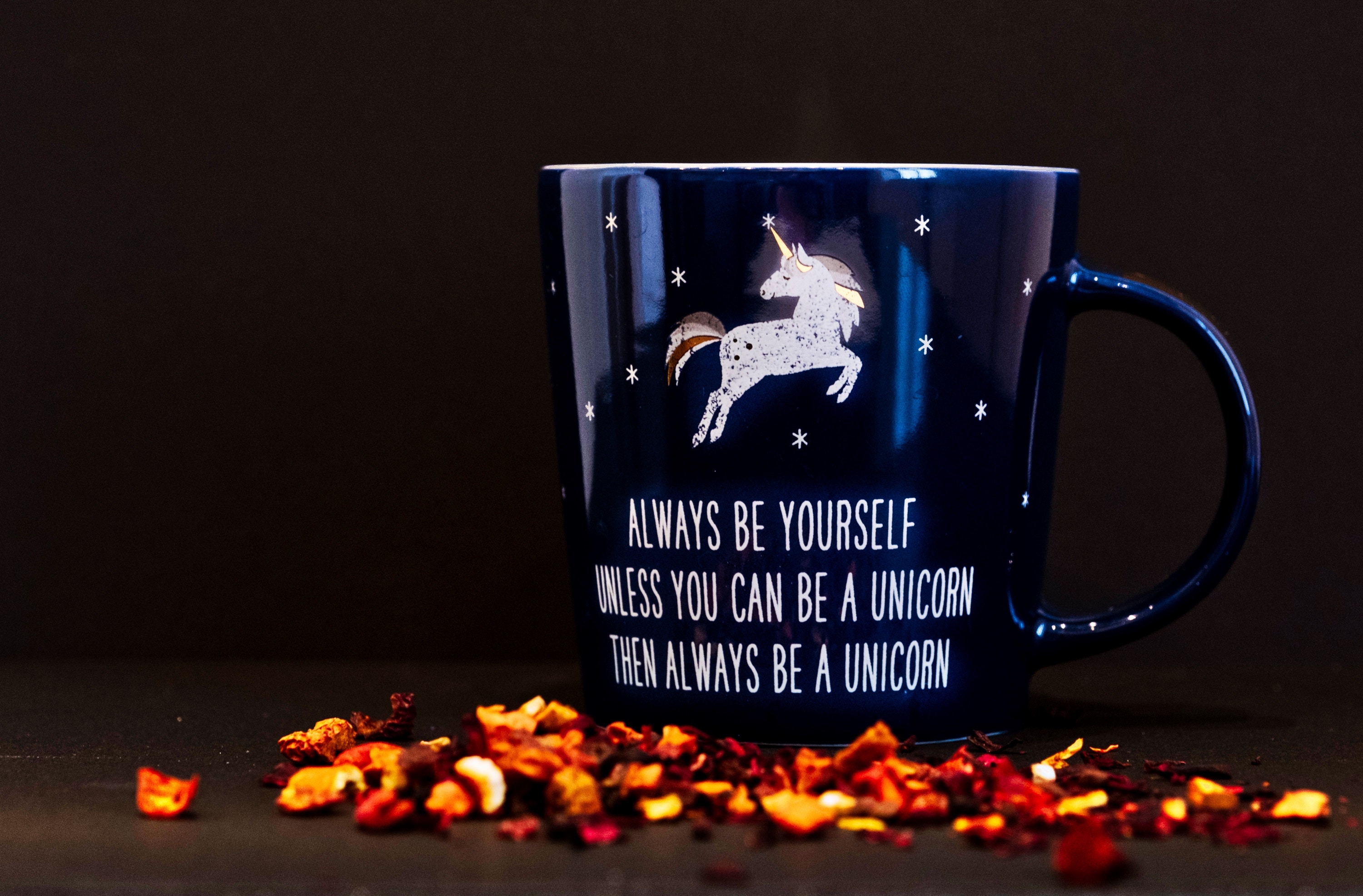Obsessed with Authenticity – what it means to consumers, how brands can respond.

Brands need a better understanding of authenticity so that they can offer consumers what they actually want. Refusing to pay fraudulent Instagram influencers saves money but is not in itself ‘creating authentic relationships’. Qualitative analysis reveals why authenticity matters to consumers and where it resides.
.
How brands understand authenticity.
Authenticity is the word on everyone’s lips right now and probably the most influential person to speak publicly on it is Keith Weed of Unilever. On 18 September, he issued a strong statement about influencer marketing. Some influencers are cheating their clients and Unilever is committed to avoiding them. There is a good reason why he and other marketers should be concerned. Businesses are investing heavily in influencer marketing but the industry is plagued by fraudulent influencers who charge £1,000 for a sponsored blog post but who are buying followers and engagement (likes, comments) for pennies. According to Social Chain CEO Steven Bartlett (25), the marketing industry will spend $1.6 billion on Instagram influencers this year alone. Of those influencers, 25% buy fake followers and engagement from bot farms. Within those 25%, up to 95% of engagement is fake. That’s a gigantic amount of wasted money and that’s what Keith Weed was talking about when he announced a crackdown on it.
But wait, there’s more. Keith is not just concerned with authenticity in the sense that no-one should waste their marketing budget on fake influencers. He is also concerned with the genuine influencers and the three-way relationship between Unilever, the influencer and the unnamed but real follower – the consumer. He says of influencer marketing “We’ve seen it grow from a nascent, test-and-learn approach to an established way of creating authentic relationships”. But what does this mean? In what sense is it possible for a brand (an imaginary entity), a paid influencer and her unknown, unacknowledged follower to have an authentic relationship? I did some discourse analysis to find out and there seem to be some generational differences as well as a degree of difference between what brands mean and what consumers mean.

Generation X. From unfulfilled dreams to torture – the costs of inauthenticity.
Consumers who are old enough to be categorised as ‘Generation X’ are old enough to remember when there was a sharp dividing line between work time and leisure or family time, and between the public and the private self. The idea used to be that you sold your time to your employer within set hours. Not only that, if you wanted to remain secure in your job, you would sell the appearance of happiness within those hours. You would smile, motivate co-workers, cheerfully greet customers. In return for this, evenings and weekends were sacred. This was private time and you were fully entitled to reserve it for expressing your privately-held opinions, including telling your friends how much you hate your job and your boss and wish you did something else. For this generation, a split between public obligation and private fulfilment was natural. Big parts of your life were off-limits for work purposes. No-one should be allowed to commandeer your hobbies, your friends, your social activity to satisfy their business interests.
In some parts of the world, this is still true, but in the West, the frustration that accompanied a conflict between heartfelt, personal desire and uncompromising, public reality became gradually less tolerated. Consumers raised within late 20th-century traditions of liberal humanism, who felt a huge need and imperative to self-actualise, began to really suffer when the public self and private self didn’t line up. Working for a brutal, capitalist empire while at the same time feeling that inside you were born to rescue animals or end world hunger became an intolerable situation. At best, it meant not self-actualising – your dreams will go unfulfilled and you can’t be your ‘best self’. At worst, it is torture. Here’s a quote from the blog of Manic Grant, a highly skilled professional and Gen-Xer who is racked with exactly this pain.
“While others live authentic and fulfilling lives where they follow their dreams and pursue their academic fetishes or otherwise find work which is compatible with their identity and personality, I’ve been a mercenary for as long as I can remember. [ ] The net result is this unfulfilling and frankly awful life, where I have no identity or set of beliefs which define me.”
manicgrant.com, September 2018
In this account and for this demographic, authenticity is tremendously important and it has a very specific meaning. It means the public self and the private self line up. You can be ‘true to yourself’ all the time, not just in the evenings. You can vocalise your politics and morals and express yourself emotionally and not have to wear an uncomfortable mask for 40 hours/week.
Social change and compulsory authenticity in the workplace.
While all this was going on and Generation X was gritting its teeth and trying not to look angry at the office, the nature of work changed. The once-sacred barrier between public and private became flimsy and disposable. Employers began to feel that they were entitled to require staff to use their own, personal social media accounts to promote the company. Facebook and Twitter accounts were scrutinised as part of the hiring process. Work itself became unstable. Full time employment was replaced by zero-hours contracts. Self-employment went through the roof. People began to understand that even if they were lucky enough to have a full-time job, they still needed to build a personal brand. Gen-Xers and Boomers had to have this explained to them. Here’s a quote from the website Entrepreneur, from a feature targeting women of a certain age who are in business.
“Up to now, you may have maintained separate social media channels for your private life and professional life. For many women leaders, this translates to a fairly active Facebook page for friends and family, and a sporadically updated LinkedIn page for professional networking. [ ] If you’re ready to take things to the next level, I’d encourage you to set up an Instagram and/or Twitter account to marry your personal and work life into one unified presence. [ ] Consider augmenting your content with more personal, accessible details and posting more often. As an example, my Instagram page features posts connected to all aspects of my life — ranging from business achievements to days out with my kids. I post to this account often, I don’t shy away from sharing personal details about my life and I actively engage with my followers. As a result, I now have an audience of more than 36,000”
entrepreneur.com, October 2018

Millennials – where they look for authenticity, how they recognise it and why it matters.
Millennials graduated from university – or skipped it altogether – and entered the marketplace with the changed work culture, the demolition of the barrier between private and public and the expectation of personal branding already in place. They don’t experience the request to promote an employer’s company on their own social media accounts as an insult and they don’t need to be told to use what was once their private life to market themselves and compete for work. We might think that since the conflict between public and private that causes Gen-Xers so much pain is not there, they would be less anxious about authenticity, but this is far from the case. In fact, they are very concerned about it, just not in the same way as their older counterparts.
The important thing to remember about this cohort, ambitious and insecure in equal measure, is that every consumer is also a marketer, a self-promoter. Yes, they probably would like the businesses that own the brands they consume to be authentic, although it is very unclear how that is ever going to be achieved. In what sense can Unilever have an authentic relationship with a customer it will never meet? In what sense is a mass-market brand of shampoo authentic? Where would authenticity reside in a bottle of Head & Shoulders or Umberto Giannini Curl Jelly Wash? More importantly, because they are self-promoters, younger consumers desperately want to be authentic, not for reasons of peace of mind but because that is how you sell yourself and attract business. They scrutinise each other for signs of authenticity, too. Why? A vigorous LinkedIn discussion of 11 October has some answers. Raf Baron, a self-styled leadership coach in his mid-twenties, offered these insights, in the context of a discussion about whether one should post self-promoting videos on LinkedIn that are edited and polished or whether it is better to upload raw footage directly to the platform from one’s cellphone.
“Is the person I see in the video the same person who is in the comments section, [who may be] almost non-existent? When I view social media, that’s how I judge people because we need to know, we have this feeling that tells us ‘can I trust you’. In the real world, it’s much easier, I would look in your eyes, look at your body language, how you speak and then I can sense whether I trust you and I go for a coffee with you.”
There’s a lot going on in this quote, so let’s highlight a couple of things. Firstly, authenticity matters because it tells people whether they can trust each other. Some people are not who they appear to be, you can’t trust them, you shouldn’t be quick to do business with them – notice how different this is from the woe of the Gen-Xer who experiences inauthenticity as a painful but conventional trade-off for having a well-paid, secure job. Secondly, there is a clear diagnostic sign of authenticity. A person who posts videos should also engage in discussion and comment on other people’s videos in a meaningful way. The personality they express should be consistent throughout.
“It’s only after time, seeing what the person posts, seeing their comments and likes elsewhere, that you get a true picture of their authenticity.”
This idea of trust needs to be unpacked if we are to get a clear idea of what is at stake. Participants in the discussion that Raf started helpfully spell it out for us. As it turns out, their concerns are reflected in a cultural change within sales. In the bad old days, not very long ago, sales meant cold-calling strangers and using every ounce of charm to persuade them to buy insurance or a photocopier. That is ‘old sales’. New sales is something different. It is heavily focused on relationship building, principally through content marketing. Provision of this content is styled as ‘giving’ and ‘helping each other’. That is contrasted against ‘selling’, which is out of favour even though there’s an obvious faultline in the sense that not many people who are independently wealthy want to spend their time posting self-promoting videos on LinkedIn when they could be sitting on a beach, playing with their kids or doing other enjoyable things that don’t pay the mortgage. Consider these quotes from various participants in Raf’s discussion.
“For someone like you or me, who want to spread the message that helps people, (video) actually matters.”
“If you are wanting to give information and help others without expectation, then no more edits other than maybe a title and simple music if at all. Why manipulate true giving? Most edited, staged and produced content is to draw attention to yourself in connecting with expectations to make money now or set the stage for future monies/compensation!”
“I can always tell who is not real by the way they deliver their content, it’s all shouting ‘at you’ rather than openly ‘giving’ you.”
“Editing could be wrapping a sales ploy up as a helpful piece of info. That’s not authentic. Authentic is when our purpose matches our message and matches our delivery.”
This is a very fascinating moral economy, fundamentally different from the anguish of the smiling, frustrated Gen-Xer who is secured by golden handcuffs to a job that they need but don’t want. What we see here is a situation where each person must sell themselves or else starve, but they must not acknowledge the marketing aspect of content marketing. It must appear to be selfless, voluntary ‘giving’ and ‘helping people’ and the appearance must be kept up at all times, in every passing comment and ‘like’ click, because that is how you are judged to be trustworthy. It is a deeply ironic situation. The first rule of Fight Club is that you don’t talk about Fight Club.
How brands need to respond.
Let’s return to Unilever and Keith Weed. What Unilever can do, with the help of Social Chain and its 25-year-old CEO, is stop wasting money on influencers who aren’t reaching anyone. However, Keith’s ambitions extend beyond cutting waste. He said “We’ve seen [influencer marketing] grow from a nascent, test-and-learn approach to an established way of creating authentic relationships”. What does this mean, in light of what we now know about consumers? What is it capable of meaning?
For Gen-Xers, the situation may be beyond help. No angry 40-year-old who is trapped in a lucrative job in banking or oil and gas is going to be capable of having an authentic relationship with either a brand of shampoo or the organisation that makes it. This is simply not what authenticity means and if brands want to reach this consumer, they would be well advised to focus less on cutting off fraudulent Instagram influencers and more on designing marketing campaigns that address the real problem of authenticity, which is that the public face and private self of the individual consumer don’t line up, resulting in existential pain.
Millennials have a different grasp of authenticity. There’s far less angst about their own authenticity but also strong views about how selling should take place (it should be invisible) and a deep lack of trust in each other. Someone who seems friendly might ‘just’ be trying to sell you something, even though – and in fact, because – you are doing the same thing. In this situation, in the situation of the large brand owner, I would stop evaluating influencers in terms of engagement, which we can see is unreliable when measured quantitatively, and make better use of qualitative data – like the quotes in this article – in which consumers set out very clearly what authenticity means and even name-check the stars of authenticity who shine in their personal galaxy. In his LinkedIn discussion, Raf nominates 10 similarly-aged celebrities of authenticity in the very first post. It might be an idea to do some qualitative, discursive and semiotic analysis of the type I’ve been demonstrating here to build knowledge of why authenticity matters and who is authentic and solicit those individuals to partner with your brand.
References
Keith Weed in Marketing Week
https://www.marketingweek.com/2018/09/18/keith-weed-fake-follower-fraud-total-eradication/
Manic Grant: While others live authentic lives ….
https://www.manicgrant.com/2018/the-unwilling-suspension-of-all-human-needs
entrepreneur.com: How to present your complex self on social media.
https://www.entrepreneur.com/article/320012
Raf Baron and contributors on LinkedIn: Does editing video take away from authenticity? https://www.linkedin.com/feed/update/urn:li:activity:6455773190466740224
Photos:
Unicorn mug by Marco Secchi on Unsplash
Mirror face by Alex Iby on Unsplash
Young woman with camera by Bruno Cervera on Unsplash
.
© 2021 Lawes Consulting. All rights reserved.
Website By the Scruff

0 Comments